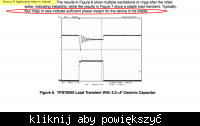jimito13
Advanced Member level 1
Hello,
I have two questions about setting up a couple of testbenches in cadence for my fully differential opamp.
1.How to configure the testbench for settling time measurement (is it done like a single-ended opamp with buffer connection and how the two output terminals are connected?) ?
2.How can i run a transient testbench to make sure that my circuit does not oscillate?
Thanks in advance.
I have two questions about setting up a couple of testbenches in cadence for my fully differential opamp.
1.How to configure the testbench for settling time measurement (is it done like a single-ended opamp with buffer connection and how the two output terminals are connected?) ?
2.How can i run a transient testbench to make sure that my circuit does not oscillate?
Thanks in advance.
